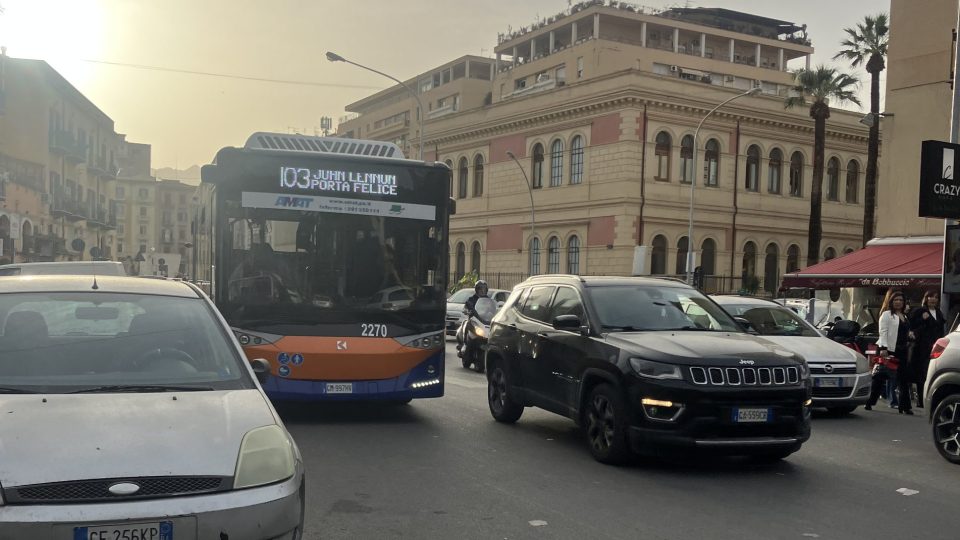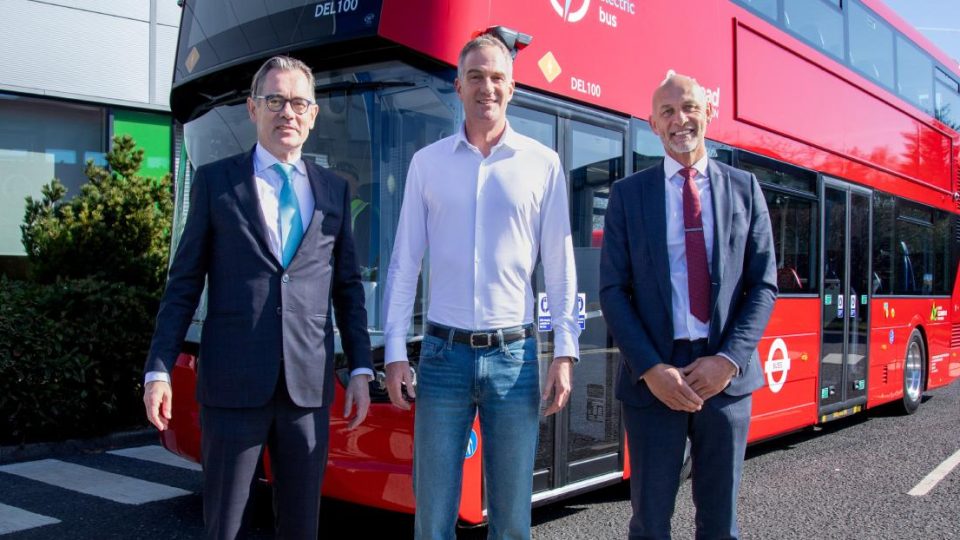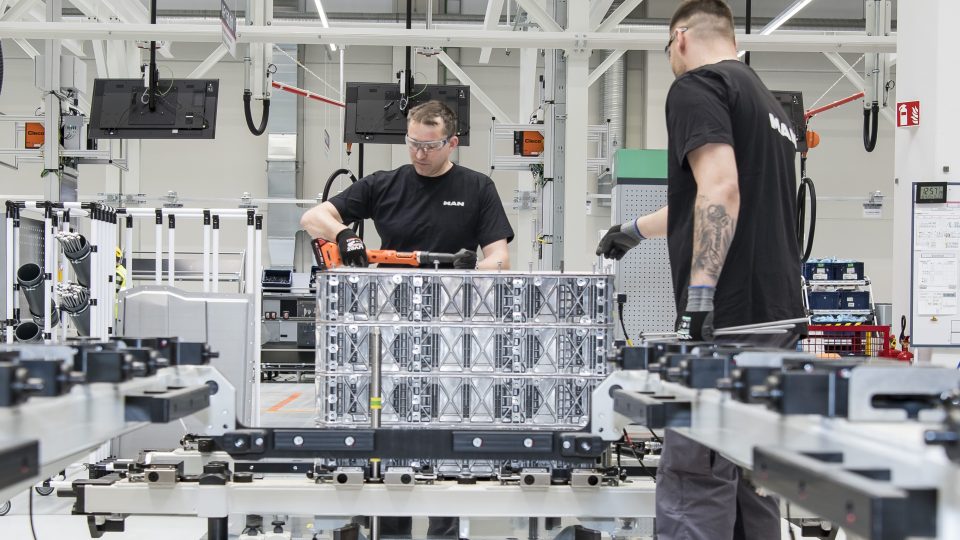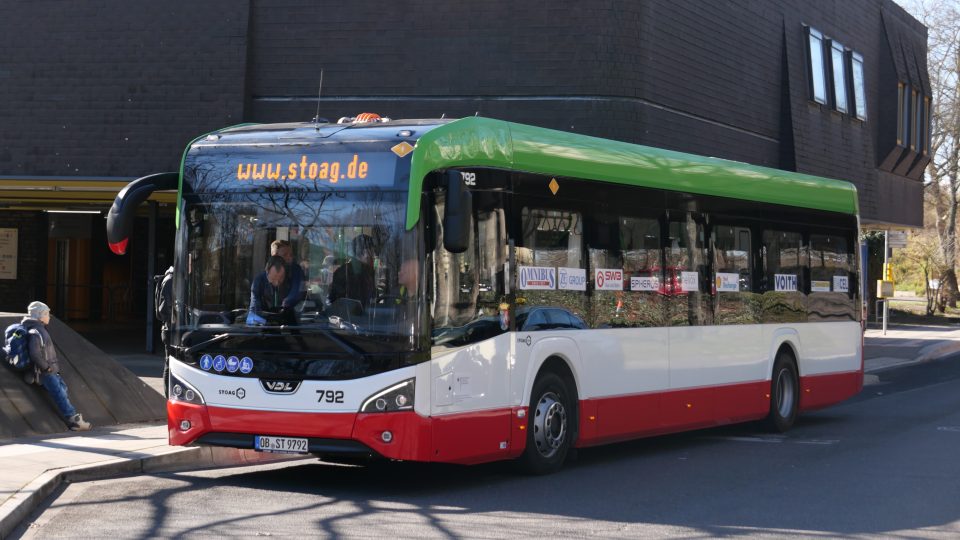Mercedes eCitaro to have BMZ NMC4 batteries, fuel cell bus features also only-H2 mode. News coming from the eMobility Days
Mercedes eIntouro, the launch gets closer: Daimler Buses has presented the near-production prototype of the first intercity bus under Daimler Truck umbrella to be powered by electricity. Interestingly enough, it’s equipped with a different set of battery and driveline than the eCitaro range, made of LFP batteries and central motor by ZF. At the eMobility […]
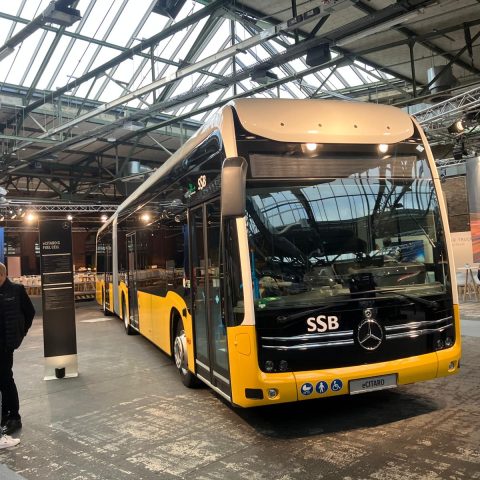
Mercedes eIntouro, the launch gets closer: Daimler Buses has presented the near-production prototype of the first intercity bus under Daimler Truck umbrella to be powered by electricity. Interestingly enough, it’s equipped with a different set of battery and driveline than the eCitaro range, made of LFP batteries and central motor by ZF.
At the eMobility Days 2024, Daimler Buses is presenting the latest developments, products and services and give an overview of future technologies.
Although the eIntouro is the main news outlined during the event, other interesting updates concern the Mercedes eCitaro fuel cell, now also capable of running exclusively on hydrogen, and a new battery generation available for the Mercedes eCitaro range: the NMC4 battery family will come from BMZ.
Mercedes eIntouro is coming, with LFP batteries
The near-production prototype of the all-electric Mercedes eIntouro interurban bus is based on the diesel-powered Intouro, but is equipped with a battery-electric drive with LFP batteries and a central motor instead. As a result, Daimler Buses is able to switch to electric mobility for the first time for interurban routes, school buses, shuttle buses and excursion routes, as well as for short trips. Two lengths are available: the 12.18-metre eIntouro and the 13.09-metre eIntouro M. Seating variants from 50 to a maximum of 63 seats are covered.
The new Mercedes-Benz eIntouro is available with a choice of one or two battery packs, each with a capacity of 207 kWh. The maximum total capacity is 414 kWh.
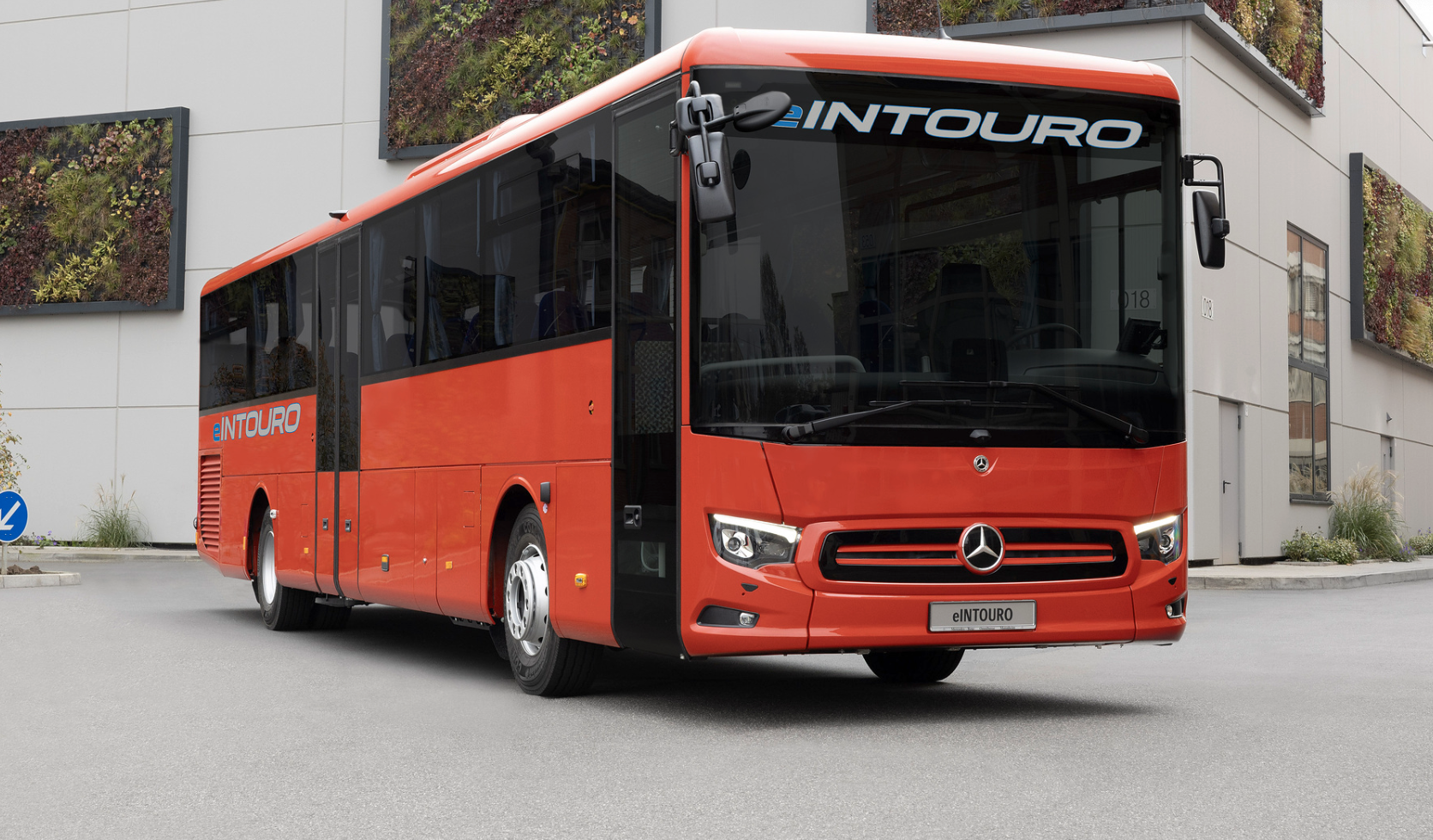
“The batteries and many of the high-voltage components in the new eIntouro have already been successfully installed in the battery-electric Mercedes-Benz eActros long-haul truck”, Daimler Buses says.
The launch of the eIntouro alignes with Daimler Buses e-mobility roadmap: the group plans to have a battery electric powered intercity bus in its portfolio from the second half of the decade (and electrically powered coaches by the end of the decade).
New NMC4 battery in the Mercedes eCitaro
Daimler Buses is also presenting the fourth generation of lithium-nickel-manganese-cobalt batteries. The new NMC4 battery generation will combine a high energy density, which enables electric buses to achieve longer ranges, with a very long service life. The battery’s longer service life “is achieved thanks to more gentle charging, with a maximum charging capacity of 150 kW, as well as regular rapid charging processes, with a charging capacity of up to 300 kW”, Daimler Buses states.
The new NMC4 batteries will be used in the eCitaro, eCitaro G, eCitaro K and eCitaro fuel cell from early 2026.
What is interesting, the modules come from Polish BMZ. Indeed Daimler Truck announced in April 2024 that their partner for 4th gen NMC battery was set to be BMZ. The Polish supplier succeeds the current NMC3 technology by BorgWarner launched in early 2023.
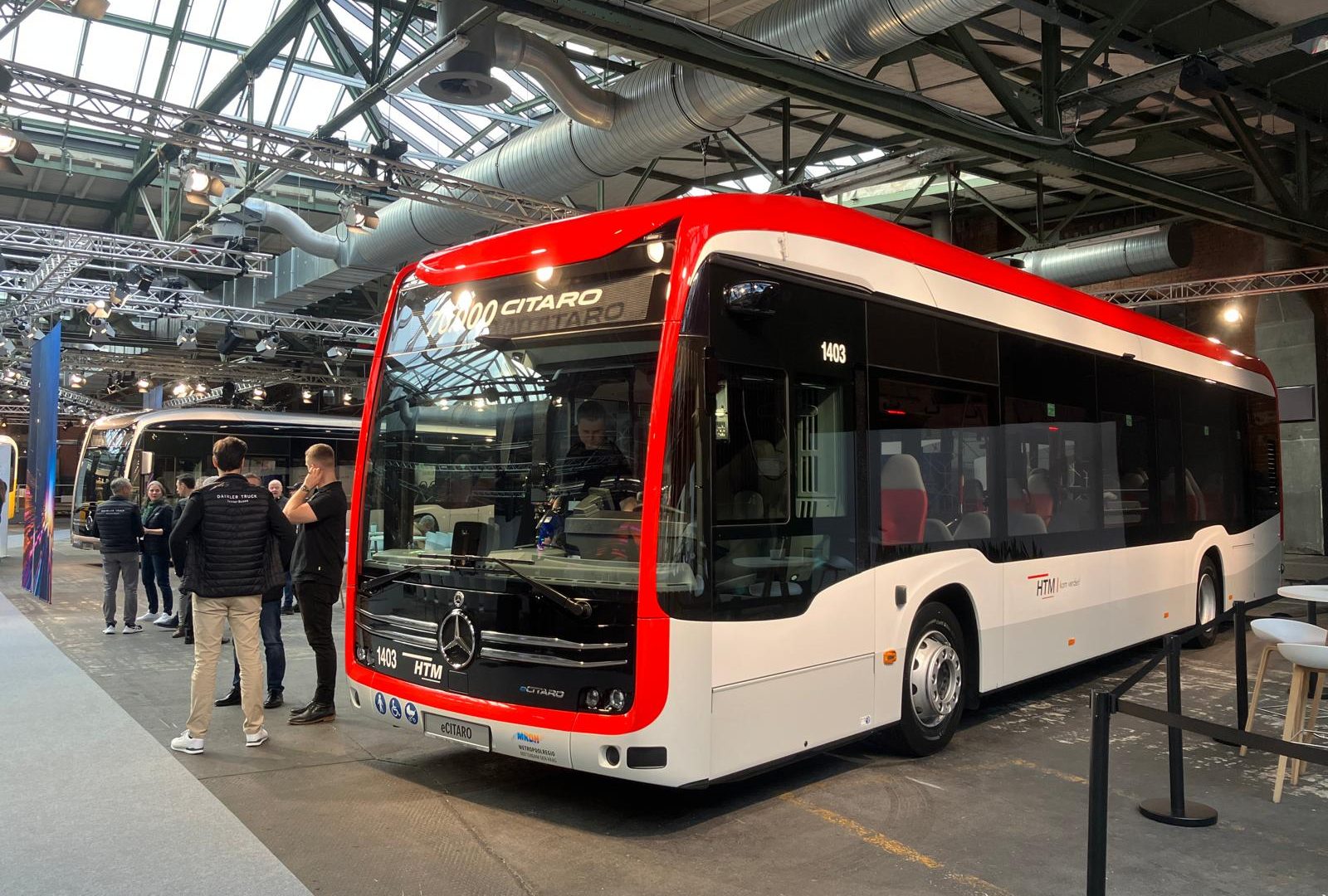
NMC 4 batteries by BMZ: +6% energy density
Due to change in the composition of the cell chemistry, the energy density in the NMC4 battery is nearly six percent higher compared to the NMC3. While a fully charged NMC3 battery pack contains 98 kWh of energy, the NMC4 battery has 111 kWh of energy. In addition, a higher proportion of the stored energy can actually be used for driving.
Unlike NMC3 batteries, the individual cells of the NMC4 battery are not cylindrical, but prism-shaped. Twelve cells make up each module, and 15 modules form a battery pack. The design of the NMC4 battery packs corresponds to that of the NMC3 battery model currently in use. The new battery generation is therefore compatible with the eCitaro in series production without any modifications to the vehicle. In the event that all battery packs in an existing eCitaro vehicle need to be replaced, even retrofitting is conceivable thanks to the compatibility between the NMC generations, Daimler Buses underlines.
Daimler Buses highlights that the NMC4 battery provides longer service life and resulting longer mileage of the eCitaro. Daimler Buses says it guarantees a service life of eight years for the new NMC4 batteries and to offer an optional extended warranty with a term of twelve years.
Another stressed topic is safety: Daimler Buses says that “battery monitoring in the NMC4 battery, i.e. thermal monitoring and alarms in the event of overheating, not only works when the operating system is switched on, as in previous vehicles, but also when the vehicle is idling”.
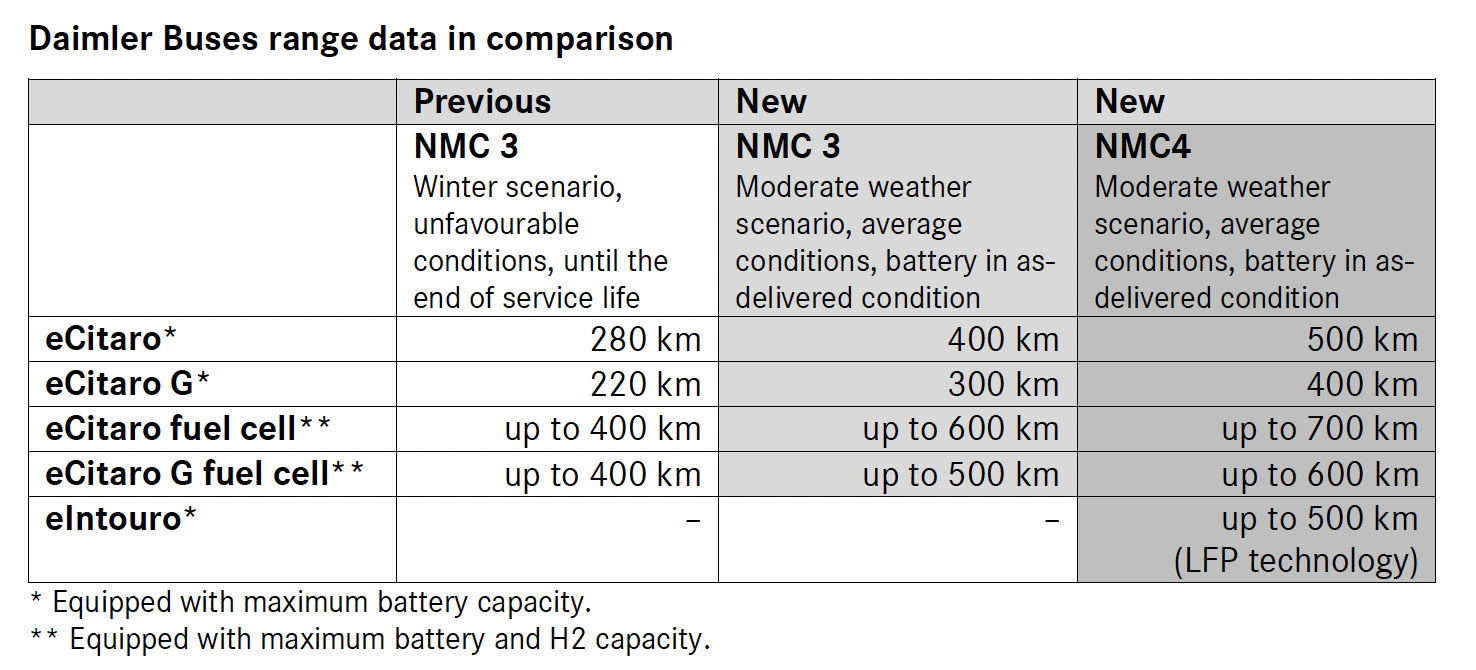
The eCitaro fuel cell now has now three operating modes
The group also announces in Berlin that “in the future” the eCitaro fuel cell model equipped with a fuel cell as a range extender can be operated with hydrogen as the only energy source in the new “H2 mode”, which can be used in certain operating scenarios, then aligning with the most common architecture fuel cell buses in Europe today are based on: the battery and fuel cell are the energy source for the drive system and the battery no longer needs to be charged externally during stationary phases but it is filled of electricity by the fuel cell while driving.
With this update, Mercedes fuel cell bus now has a total of three operating strategies: – Maximum Range mode – Balanced mode – H2 mode.
In the “Maximum Range mode” operating strategy, both the battery charge and hydrogen supply are used to the maximum level, with the fuel cell always working in the most efficient operating range. In this mode, ranges of up to 600 kilometres can be achieved in a solo vehicle with the latest NMC3 battery generation, the group says. With the NMC4 generation, available in 2026, the range will reach up to 700 kilometres. Equipped with NMC4 batteries, an articulated bus can then cover up to 600 kilometres.
In the “Balanced mode” operating strategy, the battery supplies the majority of the energy for the drive and auxiliary loads, and the fuel cell only supplies as much energy as is necessary to achieve the previously set range. Here, too, the fuel cell always works in the most efficient operating range, which enables ranges of up to 700 kilometres to be achieved in a solo vehicle with an NMC4 battery, in Daimler Buses’ words.
The battery and the fuel cell are also the energy source for the drive system in the “H2 mode” operating strategy. The battery no longer needs to be charged externally during stationary phases. It is not charged by the mains when the vehicle is stationary, but by the fuel cell while driving. Sometimes, the fuel cell is called upon more than in the other operating strategies, but it again always works in the efficient operating range between 20 and a maximum of 40 kW. With a hydrogen consumption of 6.3 kg (solo) or 9.7 kg (articulated vehicle) per 100 kilometres5, ranges of up to 480 or 360 kilometres5 can be achieved with a full tank.
New Mercedes eCitaro K is ready for the market
With a turning circle of only 17.28 metres, the compact 10.63-metre eCitaro K, launched at IAA 2024, feels at home on narrow, winding routes in suburbs and older towns. Its specialities include operating with a limited number of passengers. With a maximum battery capacity of 588 kWh in the current NMC3 version, the eCitaro K “guarantees a range of 400 kilometres under favourable conditions”. The eCitaro K is available with either two or three doors.
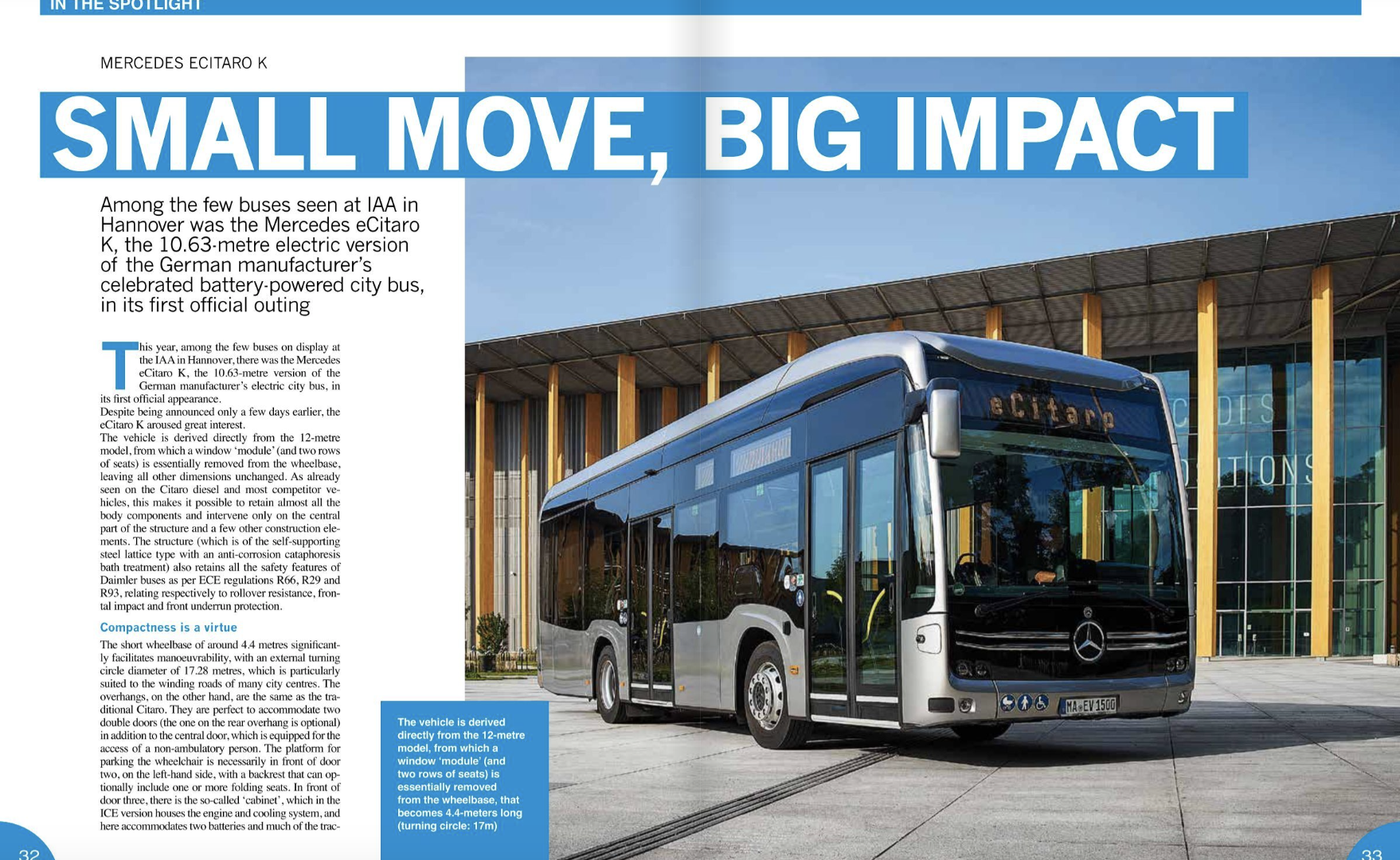
For even longer routes, intermediate charging using a pantograph or charging rails is also possible in the eCitaro K. In this case, the charging capacity is up to 300 kW.
The layout of the passenger compartment is identical to that of the Citaro and eCitaro. Also the cockpit and operating concept of the city bus correspond to those seen in the eCitaro.
The Mercedes eCitaro fuel cell bus comes with all the necessary components as standard, which enables the vehicle to be easily integrated into the Omniplus On Portal for real-time monitoring of the vehicle functions. Hydrogen filling levels, battery charge levels and the resulting remaining range can be read at any time using the Omniplus On monitor. In the event of a malfunction or if the vehicle falls below the minimum charge or filling values, the traffic controller or fleet manager receives a corresponding warning.
The manufacturer also stresses that trends and potential optimisations for energy consumption can be displayed in detail in On monitor. In addition to diagrams showing consumption values per vehicle and route, On monitor also distinguishes whether the energy was used for the drive or the vehicle’s air conditioning. This makes it easy to compare individual vehicles with each other and, if necessary, derive suitable measures for reducing energy consumption. For bus companies with a mixed fleet that do not use the Omniplus On Portal, Omniplus offers individually bookable Omniplus On data packages that enable vehicle data from Mercedes Benz and Setra buses to be integrated into existing fleet management and control systems from third-party providers – simply and without retrofitting additional hardware.
Daimler Buses Solutions, what’s new?
Daimler Buses Solutions GmbH advises transport companies and actively supports them on their journey to electromobility. The company specialises in designing, building and advising on electromobility infrastructure.
In cooperation with experts from Daimler Buses Solutions GmbH, Daimler Buses can supply the entire eMobility ecosystem from a single source on request: from the feasibility analysis to individually configured electric buses and the complete electromobility infrastructure – including construction measures, electrical installations, charging infrastructure, battery storage, charging management systems and other digital services.
New digital services for electric buses within Omniplus
Omniplus is expanding its range with additional services specifically for electric buses. For instance, the performance analysis feature previously available for diesel vehicles will also be available for electric buses starting in the second quarter of 2025, enabling users to assess their driving style. The performance analysis feature is a functional component of Omniplus On Monitor and can be purchased individually for each bus for a monthly fee.
Another new feature is Omniplus On Battery Monitoring, which provides fleet operators with information on the condition of the high-voltage battery and recommendations on using it effectively.
The evaluation and assessment of battery monitoring is based on battery-relevant KPIs such as battery type, kilometre reading, age, battery cell temperature, state of health and many more.
For example, the system recognises when a bus is parked with fully charged batteries for an extended period of time and recommends not charging them fully until shortly before the next scheduled journey start in order to preserve the battery. The digital battery monitor also detects other factors, such as the maximum state of discharge or excessive temperatures and recommends suitable measures. This prevents damage to the battery. The Battery Monitoring service can be booked for each vehicle in the Omniplus On Portal.
The free Warranty Status service offers insight into the warranty status of the battery and prevents possible warranty violations. For the new eIntouro, Omniplus will in future offer wireless software updates that don’t require a trip to the workshop.
With the new digital, bidirectional Remote Charge Control service, Omniplus On offers operators of electric bus fleets operational vehicle preparation. This means that electric buses can simply be precisely charged and preconditioned to be ready exactly when they are needed. This also includes selecting the type of preconditioning, i.e. heating, cooling or ventilation. The digital service for electric bus fleets runs independently of the charging infrastructure and helps to boost the vehicle’s range and the batteries’ service life. It is also possible to set a certain maximum battery charge level to protect the battery, as well as define the scheduled departure time of each individual bus in order to have the full battery charge available for operation. In the eCitaro fuel cell, the operating modes can also be configured via Remote Charge Control. Remote Charge Control is an optionally available Omniplus On digital service component.


